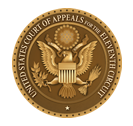Earlier today the U.S. Copyright Office released its long-awaited review of improvements to Section 108 of the Copyright Act, the section which grants limited, specific exceptions to copyright for libraries and archives. Over a decade ago the Office convened the Section 108 Study Group* to assess improvements to this section, and in 2008 that group produced its report. Since then (and with recent inquiries from the Office to stakeholders) we’ve been waiting to hear from the Copyright Office about its views on updates to Section 108. This Section 108 “Discussion Document” does just that.
Before getting into the document I want to start with two observations. The first is that Section 108 is horribly outdated. Most of its text is exactly the same as enacted in 1976. The piecemeal updates that have been added to address modern library and archives practices, including online uses, haven’t worked well and are awkward additions. I–and many others–have written about the need to update Section 108.
The second is that I’m leery of asking Congress to revise any part of the Copyright Act, including Section 108. From someone who thinks that copyright law already unnecessarily restricts access to lots of information in ways that have no positive effect on the copyright system’s underlying purpose–encouraging the creation and dissemination of new creative works–I don’t think Congress has a great track record on legislative revisions. Since the 1970s Congress has consistently made copyright terms longer, dramatically expanded the number of works protected, and has made using those works riskier. Asking Congress to revisit Section 108 could mean that it gets much worse, rather than better.
All that said, I think many of the Office’s suggestions are pretty good. I can’t go into every detail in this blog post–the Discussion Document is around 60 pages long, and it needs every one of those pages–so, for now, I thought I’d point out the top three positives I see in this document:
1) The Office suggests in a number of places removing hard numerical limits on the number of copies allowed. For preservation purposes, for example, the proposal would allow libraries, archives, and museums to reproduce works “as many times as is reasonably necessary for preservation and security.” This is a major problem under the current statute, which generally only allows for making three preservation copies. Perhaps more significantly, the proposal would also low eligible institutions to make incidental, temporary copies that are needed for making resulting preservation copies and for copies made for users. This is important when thinking about digital access because it would eliminate concerns about whether 108 can apply at all when incidental copies are made in the course of transfer from one machine to another.
2) It would expand the categories of works to which Section 108 applies. The current statute makes several Section 108 exceptions inapplicable to musical works, pictorial, graphic or sculptural works, and to motion picture or other audiovisual works. That restriction currently limits 108’s usefulness–and makes it all the more difficult to understand and apply–without providing a clear benefit for rightsholders of those kinds of works. This document also reframes how the Section 108 exceptions would apply to “published” versus “unpublished” works (the current Section 108 treats unpublished works differently, with the idea that unlike published works, there generally isn’t a commercial market to be harmed by the use of those materials ). The new proposal opts instead to make distinctions based on whether the work was ever “disseminated to the public” by the copyright owner. “Publication” is a notoriously difficult concept, so the move away from it to something a bit broader is welcome, though I’m not sure the concept of “disseminated to the public” is going to be easier to apply in practice.
3) It suggests that institutions should be able to provide remote digital access to users, albeit in some cases limited to one user at a time, for a limited time. This most directly applies to works “not disseminated to the public,” (i.e. unpublished works). For archives, this enhancement could be significant when thinking about how to provide access to preservation copies. Would an online reading room, with technology to allow for controlled digital lending, be permissible under these terms?
The Office’s 108 document also has parts that are likely to cause some controversy. One big one is a suggestion that eligible libraries, archives, and museums could be exempt from copyright liability for violating non-negotiable contract terms that prohibit institutions from engaging in preservation activities otherwise permitted under Section 108. I think this is an incredibly important suggestion, given the number of click-wrap, consumer-oriented license agreements that libraries enter into so they can provide electronic access to their patrons. Many of those contracts prohibit making copies necessary for preservation purposes, but if libraries aren’t saving copies there is a great risk that in the long term, those works may one day become entirely inaccessible to everyone.
Another part of the document likely to cause some controversy is the requirement that eligible institutions implement reasonable digital security measures. I understand the desire for such a limitation, but this is an area where the devil is going to be in the details. Who decides what is reasonable is an open question, and how compliance with that provision is monitored and assessed could be extremely burdensome for some institutions.
Overall, I have to say that I’m impressed. I think the Office did good work in pulling together the results of the Section 108 Study Group report as well as feedback from stakeholders in creating this document. As proposed, the Section 108 envisioned in this document still wouldn’t provide all or even most of what libraries, archives, and museums need to fulfill their missions, and fair use would remain an important and probably overriding consideration when making uses of copyrighted works. But, as a sort of safe harbor for institutions seeking certainty for activities that they commonly engage in, the types of improvements outlined in this document would be welcome and a great help in facilitating modern (as opposed to 1970s-era) libraries, archives, and museums.
___________
* The 108 study group was jointly convened by the The National Digital Information Infrastructure and Preservation program of the Library of Congress and the Copyright Office.








